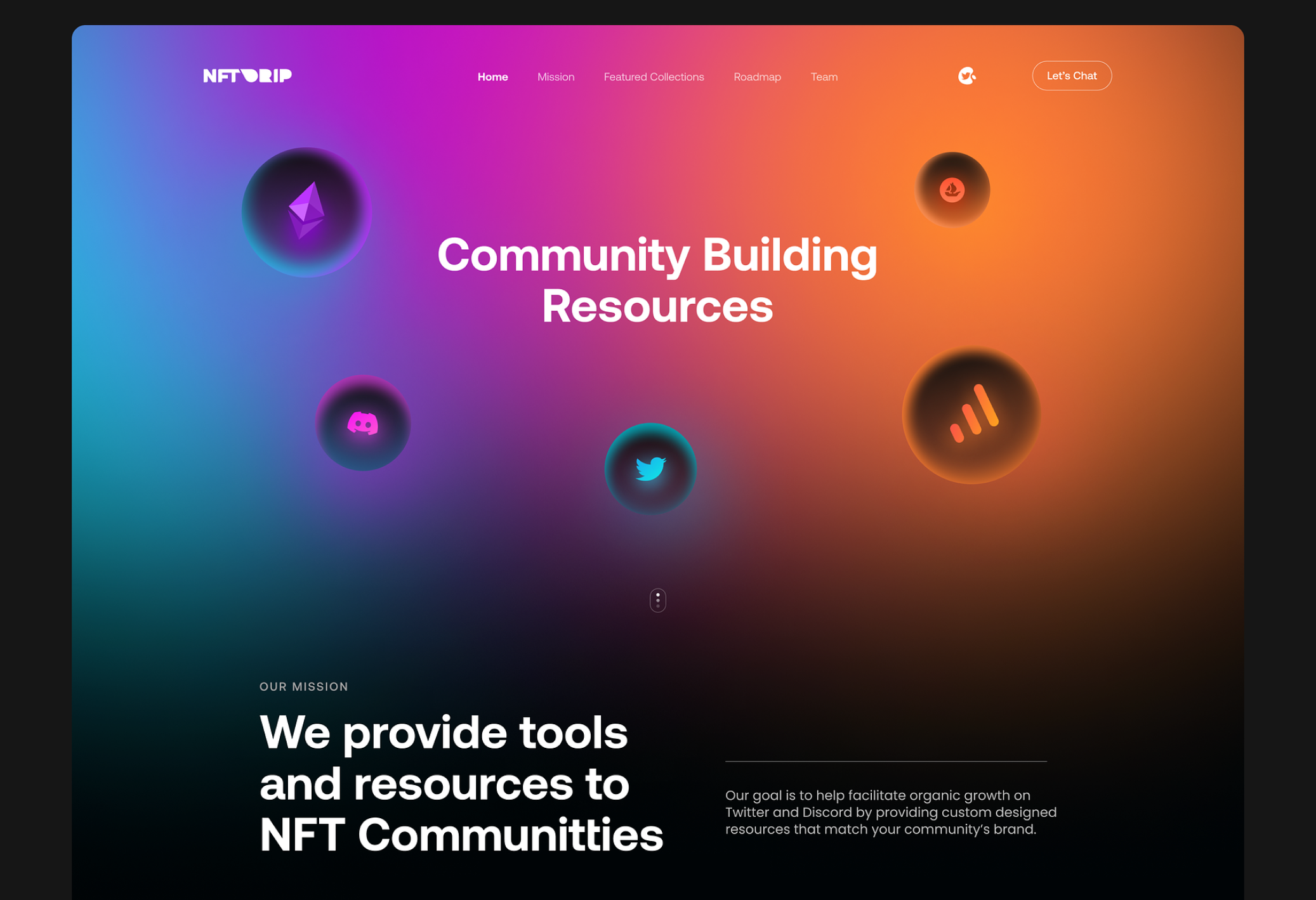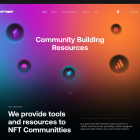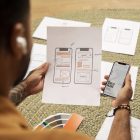The design landscape has been reshaped by a mix of evolving technologies, innovative interfaces, and new ways to engage users. We will be looking at the hottest UI/UX trends this year. From sleek 3D graphics to AI-driven design, let’s explore what’s in store for landing pages, e-commerce sites, mobile apps, and more.
3D Graphics: From Icons to Full-Fledged Digital Galleries
Three-dimensional graphics have surged in popularity thanks to more powerful computers and affordable development tools. Icons, buttons, and illustrations on websites and apps now often feature 3D elements, captivating users with their unique appeal. Beyond these static elements, 3D animations create a sense of interaction and immersion. Companies are leveraging 3D to create virtual galleries and product simulations, providing users with a dynamic and engaging experience.
Complex Gradients and Abstract 3D Forms
Complex gradients are back, often in combination with abstract 3D shapes. These trends create a futuristic vibe, especially in Web3 and digital-focused projects. By blending these elements, designers evoke a sense of modernity and innovation. These intricate designs are most common in fintech, creative agencies, and high-tech industries, offering a fresh and vibrant aesthetic.
Glassmorphism and Neumorphism: Realism Meets Elegance
Glassmorphism and neumorphism have made a comeback. These trends add a touch of realism and depth to interfaces, with glass-like elements and nuanced shadows. Glassmorphism mimics transparent glass, adding a sleek and modern look to interfaces, while neumorphism plays with soft gradients and subtle depth, providing a sense of tactile realism. They are popular among digital companies aiming to create a closer connection with users by mimicking real-world textures and materials.
Low-Poly Illustrations and Hand-Drawn Art
Low-poly illustrations, characterized by their simplistic yet effective shapes, are making waves in 2024. These illustrations evoke nostalgia and can be used to create engaging experiences, like mini-games or virtual quests. Hand-drawn illustrations remain a staple for storytelling, adding a personal touch that resonates with users. Major companies like Google, Yandex, and Dropbox continue to use them to create unique styles and evoke a sense of familiarity and warmth.
Minimalism and Monochromatic Design: Clean and Focused
Minimalism continues to be a dominant trend, emphasizing simplicity and clarity. It’s especially valuable in complex interfaces like dashboards and personal accounts, where users need to quickly find information without distractions. Monochromatic design, often featuring a single color palette, adds to this clean aesthetic. These trends help users focus on the essentials, promoting a sense of order and trust.
Dark Interfaces: Beyond Dark Mode
Dark interfaces have evolved from a simple aesthetic choice to a style that conveys luxury and exclusivity. This trend is prevalent in premium products, blockchain projects, and high-end services. The dark theme creates a unique atmosphere, often used to emphasize the high status and progressive nature of the technologies involved.
Micro-Animations and Kinetic Typography: Guiding and Engaging
Micro-animations play a crucial role in guiding users through interfaces. They provide visual cues, helping users navigate and accomplish tasks without confusion. Kinetic typography, which combines text with movement, is another engaging trend. It brings dynamism to interfaces, allowing designers to convey messages in creative and interactive ways.
Super-Interactive Websites and Unique Characters
Websites that “transport” users into a virtual world are gaining popularity. These super-interactive experiences allow users to explore a brand’s values, history, and characteristics. Unique mascot characters further enhance user engagement, acting as guides and creating emotional connections. This trend ties into the broader concept of gamification, where users earn rewards and achievements through interactive experiences.
Retro and Vintage Elements: Nostalgia in Design
Retro and vintage design elements are excellent triggers for emotional engagement. They evoke a sense of nostalgia and shared memories, building trust and connection with users. This trend is ideal for brands targeting audiences that appreciate a nod to the past, using elements like calligraphy, antique fonts, and old photos to create a unique experience.
Ubiquitous AI: Automation and Personalization
Artificial Intelligence (AI) is transforming the design landscape by streamlining content creation and enabling more personalized experiences. AI-generated content can quickly fill gaps in websites, while AI-driven interactive backgrounds and characters add a layer of engagement. This trend has made it easier for designers to create compelling visuals and for brands to provide tailored experiences to their users.
Bold Experimental Design: Pushing Boundaries
Bold experimental design incorporates vibrant typography, acid colors, GIF animations, and scrolling text to create striking visuals. This trend is perfect for projects that need to grab attention quickly, such as events or unconventional brands. However, it’s not suitable for every context, especially those requiring a more subdued or professional approach.
Final Thoughts: Balancing Creativity and Functionality
While trends offer exciting opportunities to innovate, it’s crucial to maintain a balance between creativity and functionality. Always prioritize user experience, ensuring that design choices enhance usability and meet user expectations. Collaborate with experienced designers and developers to create interfaces that are both visually appealing and highly functional.
Thank you for joining us on this exploration of UI/UX trends in 2024. Whether you’re working on a new project or considering a redesign, these trends provide a roadmap for creating engaging, modern, and user-friendly interfaces. Stay curious, and let’s continue to push the boundaries of design!




